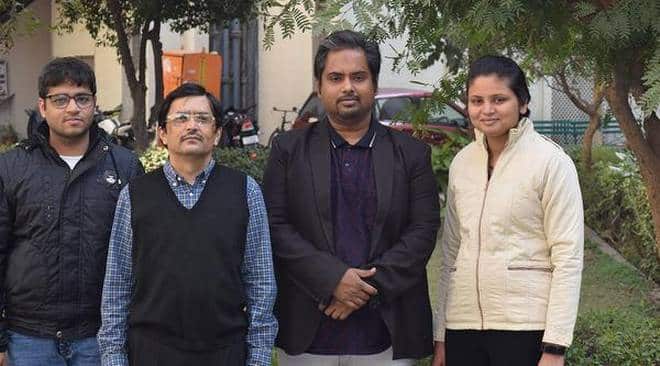FiRE Algorithm To Detect Rare Cells Developed By Indian Researchers
Identification of a rare cell form dataset comprising millions of cells is a tedious procedure. To make it easy Delhi researchers have developed a new algorithm which can identify the rare cells from a large pool of cells within a second. Finder of Rare Entities (FiRE) is an algorithm designed that allocates a rareness score to each cell based on the gene expression profile of about twenty thousand genes. Cells with a score above a certain threshold are declared are rare cells.FiRE, apart from being fast and accurate, it also depicts superior sensitivity and specificity in comparison to existing methods.
Few Examples of rare cells are circulating tumor cells, cancer stem cells, antigen-specific T cells. Identification of these rare cells may open doors to understanding the complex mechanism of these cells which cause lethal diseases. It would lead to early detection and diagnosis of disea
se such as Cancer.A research team led by Prof. Jayadeva from Indian Institute of Technology (IIT) Delhi and Prof. Debarka Sengupta from Indraprastha Institute of Information Technology (IIIT-Delhi) developed this algorithm by testing its effectiveness using mouse brain cells taken from a specific region. The team discovered a discovered a new sub-type of pars tuberalis cell lineage which is linked to the development of pituitary gland.
Prashant Gupta one of the first authors of the paper from IIT Delhi stated that Existing algorithms use clustering or other statistical techniques that involve rigorous parameter estimations, thus making computational cost very high. He further added that to asses the level of rarity of each cell, FiRE uses sketching method which is a variant of locality-sensitive hashing. The hashing technique tends to put cells with similar properties together.
Prof. Jayadeva with a background in machine learning stated that the existing tools for detecting rare cells are highly complex & tedious when it comes to analyzing large count of cells. By the use of FiRe searching for rare cells in large-scale single-cell messenger RNA datasets tractable. Gene expression was used as a base to develop the algorithm. Drop-Seq further allows effective reading of the gene expression profiles of thousands of cells in a shorter duration.
Five different data sets were used to test the feasibility of the algorithm. Gene expression of about 68,000 different cells was compared in peripheral blood containing 0.3% megakaryocytes, rare cell populations with different grades of rarity showed up. As a result, the rarest cell culture comprised only of megakaryocytes, thus validating the algorithm.
In a simulation experiment to evaluate the performance of FiRE algorithm, the gene expression profiles of two types of cells were mixed in vitro. And by increasing the percentage (from 0.5 to 5%) of one cell type, the team tested the precision and sensitivity of FiRE and other existing algorithms to correctly identify the rare cells. The sensitivity of the FiRE algorithm was higher than the rest even when rare cells comprised 0.5% of the population. “When they constituted 2.5%, FiRE could identify rare cells with 85% accuracy, far higher than the other algorithms,” says Aashi Jindal from IIT Delhi and the other first author of the paper.
“We are now validating the new cell type [pars tuberalis] discovered using FiRE. Most malignant cancers shed circulating tumour cells. So we are also trying to use FiRE for early cancer detection by identifying the circulating tumour cells, which are rare in peripheral blood,” says Prof. Sengupta, whose lab pioneered single-cell genomics research in India.






























